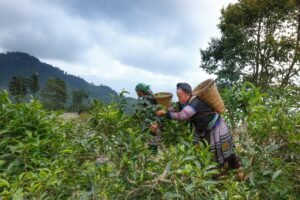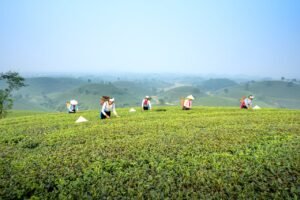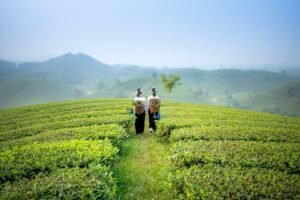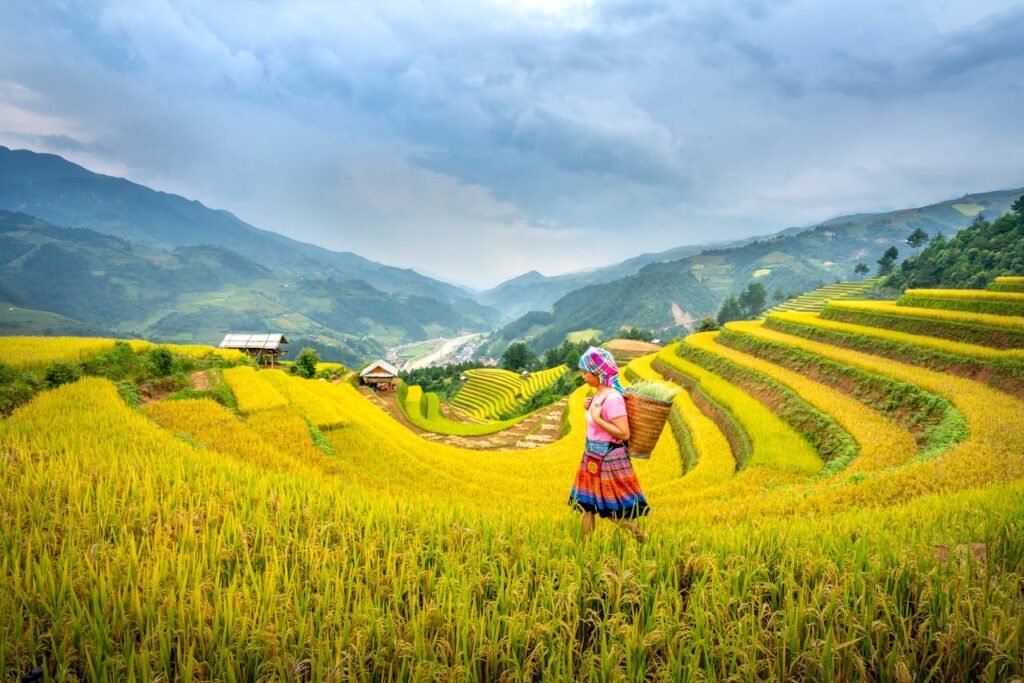Tea, a beloved beverage enjoyed worldwide, begins its journey from the lush green tea gardens where skilled hands pluck delicate leaves with precision. Central to this age-old practice is the humble yet indispensable tool known as the tea-plucking basket. Let’s delve into the significance, design, and role of this traditional basket in the art of tea harvesting.
Origins and Significance
The tea plucking basket has deep roots in the history of tea cultivation, especially in regions like China, India, Sri Lanka, and Japan, where tea production thrives. It serves as a portable vessel, carefully crafted to allow tea pluckers to gather tea leaves efficiently without damaging them. The baskets are typically woven from natural materials such as bamboo, rattan, or straw, offering the durability and flexibility required for varying terrain and climates.
Design and Construction
The construction of a tea-plucking basket is a testament to craftsmanship. These baskets are lightweight yet sturdy, designed to be carried comfortably during long hours in the fields. The woven structure allows for air circulation, keeping the freshly plucked leaves from wilting prematurely. Many baskets also feature adjustable straps or handles, enabling pluckers to wear them on their backs or carry them by hand, adapting to different plucking techniques and preferences.
Design
Structure:
- Material: Typically made from lightweight, durable materials such as woven bamboo, plastic, or metal.
- Shape: Often cylindrical or slightly tapered, with an open top and a handle or shoulder straps for carrying.
- Size: Designed to be large enough to hold a significant amount of tea leaves but not so large as to be cumbersome. Standard capacities range from 10 to 20 liters.
Components:
- Handle/Straps: Usually equipped with padded shoulder straps or a handle for easy carrying and to reduce strain on the user.
- Mesh or Lattice: Some designs include a mesh or lattice pattern to allow for ventilation and to help separate the tea leaves from stems and debris.
- Rim: Often reinforced with a band or rim to maintain shape and prevent deformation during use.
Ergonomics:
- Weight Distribution: Designed to evenly distribute weight to reduce fatigue. The handle or shoulder straps are engineered to be ergonomic and supportive.
- Comfort: Padding and adjustable straps ensure comfort during long periods of use.

Functionality in Tea Harvesting
Tea pluckers, often women whose skill is honed over years of experience, rely on these baskets to maintain the integrity of the delicate tea leaves. The design ensures that leaves are gently placed inside without bruising or tearing, preserving their freshness and flavor profile. This meticulous harvesting process is crucial as it directly influences the quality and character of the final tea product.
Functionality
Tea Plucking:
- Efficiency: Facilitates quick and efficient collection of tea leaves by allowing pickers to gather and transport leaves with minimal spillage.
- Convenience: Enables hands-free plucking as the basket is worn on the back or shoulder, allowing pickers to use both hands for plucking.
Leaf Preservation:
- Ventilation: The design often includes ventilation features to prevent wilting and preserve the quality of the leaves by reducing moisture buildup.
- Separation: Some baskets are designed with inner compartments or mesh linings to keep different grades of tea leaves separate.
Durability:
- Material Strength: Made from materials that can withstand the rigors of fieldwork, including exposure to weather and rough handling.
- Maintenance: Easily cleaned and maintained to ensure longevity and hygiene.

Industry Impact
Productivity:
- Harvesting Efficiency: Increases productivity by enabling pickers to collect leaves more efficiently, which can lead to higher yields and better quality tea.
- Reduced Labor: Helps in reducing the physical strain on workers, potentially increasing the number of leaves harvested per day.
Economic Impact:
- Cost: Improves cost-efficiency for tea plantations by optimizing labor and improving harvest rates.
- Quality: Enhances the quality of harvested leaves, which can lead to higher prices and better market competitiveness.
Worker Welfare:
- Health and Safety: Contributes to better working conditions by reducing physical strain and the risk of injury.
- Work Satisfaction: Can improve job satisfaction by making the plucking process less physically demanding.
Sustainability:
- Environmental Impact: Better design can minimize waste and improve the overall sustainability of tea harvesting practices.
Variations Across Tea Cultures
Across different tea-producing regions, variations in basket design reflect local traditions and practical needs. In China, for instance, bamboo baskets are prevalent, known for their lightweight nature and durability. In Japan, baskets made from woven straw or cloth might be used, tailored to the meticulous standards of Japanese tea cultivation. Each type of basket not only reflects regional aesthetics but also embodies the wisdom passed down through generations of tea farmers.
Sustainability and Modern Adaptations
As the world embraces sustainable practices, the tea industry is also exploring eco-friendly alternatives for tea plucking baskets. Innovations include using recycled materials or biodegradable fibers, reducing environmental impact without compromising functionality. Moreover, ergonomic designs are emerging to enhance comfort and efficiency for tea pluckers, ensuring they can continue their vital role in tea cultivation with greater ease.
The tea plucking basket remains a symbol of tradition, craftsmanship, and practicality in the art of tea harvesting. Beyond its functional role, it embodies the cultural heritage and expertise of tea-producing communities worldwide. As tea enthusiasts savor their favorite brew, they can appreciate the journey of each leaf, from the tender hands that pluck them to the time-honored basket that carries them to perfection.
Whether enjoyed as a morning ritual or a shared moment of relaxation, every cup of tea tells a story—a story woven into the very fabric of its plucking basket.

